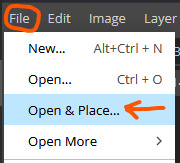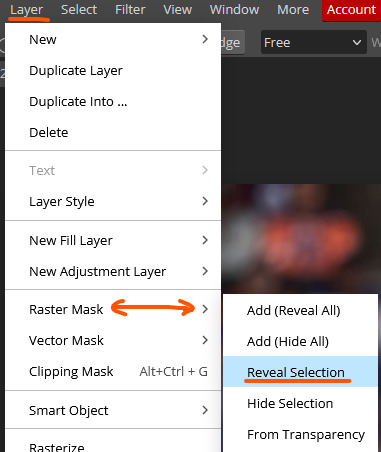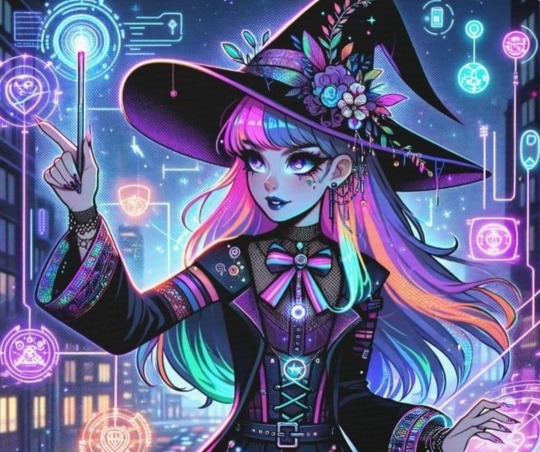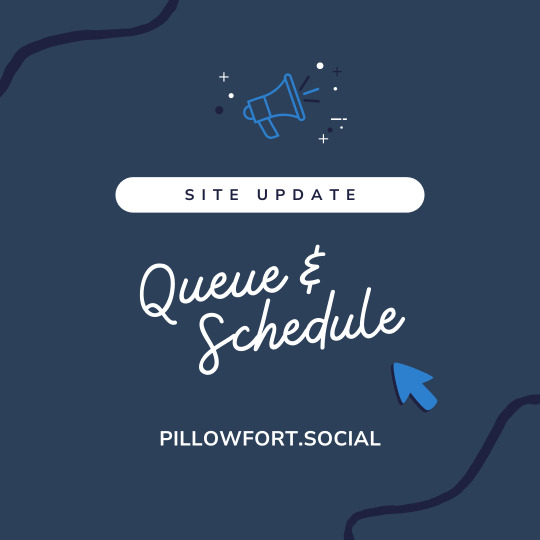#Web-based AI Image Generator
Explore tagged Tumblr posts
Text
AI Image Generator Market to be Worth $1093.1 million by 2032

Meticulous Research®—a leading global market research company, published a research report titled ‘AI Image Generator Market—Global Opportunity Analysis and Industry Forecast (2025-2032)’. According to this latest publication, the AI image generator market is expected to reach $1093.1 million by 2032, at a CAGR of 16.4% from 2025 to 2032.
The rising adoption of AI image generator solutions for marketing and advertising activities, as well as the rise in do-it-yourself (DIY) content generation, are driving the growth of the AI image generator market. However, market growth is hindered by issues related to data privacy and the creation of malicious content.
In addition, the growing adoption of AI image generators in the healthcare sector, the increasing integration of generative AI and computer vision for advanced image manipulation, and the growing use of AI image generators by personal users present significant growth opportunities for market players. On the other hand, the market faces major challenges, including concerns with image dimensionality. Moreover, the growing adoption of augmented reality (AR) and virtual reality (VR) in AI image tools is a prominent technology trend in the AI image generator market.
Key Players:
The AI image generator market is characterized by a moderately competitive scenario due to the presence of many large- and small-sized global, regional, and local players. The key players operating in the AI image generator market are Microsoft Corporation (U.S.), Google LLC (A Subsidiary of Alphabet Inc.) (U.S.), Amazon Web Services, Inc. (A Subsidiary of Amazon.com Inc.) (U.S.), Adobe Inc. (U.S.), OpenAI, L.L.C. (U.S.), Nvidia Corporation (U.S.), Meta Platforms, Inc (U.S.), Databricks, Inc.(U.S.), Vyro LLC (Australia), Jasper AI, Inc. (U.S.), NightCafe Studio Pty Ltd (Australia), Stability AI Ltd (U.K.), Lightricks Ltd. (Israel), Runway AI, Inc. (U.S.), Lumen5 Technologies Ltd (Canada), Craiyon LLC (U.S.), Resleeve B.V. (Netherlands), and starryai, Inc. (U.S.).
The AI image generator market is segmented based on offering, deployment mode, application, platform, and end user. The report also evaluates industry competitors and analyzes the market at the regional and country levels.
Among the offerings studied in this report, the solutions segment is anticipated to hold the dominant position, with a share of 73.0% of the market in 2025. The high adoption of AI image generator solutions among individuals and small businesses is largely due to limited access to professional design services. These solutions enable high-quality image creation while facilitating rapid integration that minimizes human error, ensuring the production of accurate and tailored images. These factors contribute to this segment's dominant position in the AI image generator market.
Among the deployment modes studied in this report, the cloud-based segment is anticipated to hold the dominant position, with a share of 66.0% of the market in 2025. The increasing adoption of cloud-based AI image generators is driven by their ability to deliver regular updates and improvements automatically, eliminating the need for user intervention. Furthermore, these solutions facilitate access for all team members working on the same project from centralized platforms, ensuring consistency and streamlining workflows. These factors support this segment's dominant position in the AI image generator market.
Among the applications studied in this report, the professional/enterprise segment is anticipated to hold the dominant position, with a share of 74.0% of the market in 2025. The rapid growth of AI image generators is driven by enhanced computational resources that enable enterprises to concentrate on strategic tasks instead of managing infrastructure. Additionally, the increasing availability of API access from AI image generator providers allows businesses to seamlessly integrate image generation capabilities into their existing applications and platforms. These factors contribute to the segment's dominant position in the AI image generator market.
Among the platforms studied in this report, the web-based segment is anticipated to hold the dominant position, with a share of 71.0% of the market in 2025. The rapid growth of web-based AI image generator tools is driven by their straightforward download and installation processes, which streamline user experience and save time. Additionally, the accessibility of these tools from any device—be it a computer, tablet, or smartphone—enhances their usability for creating and editing images on the go. These factors significantly contribute to this segment's dominant position in the AI image generator market.
Among the end users studied in this report, the marketing and advertising segment is anticipated to hold the dominant position, with a share of 36.0% of the market in 2025. The rapid growth of AI image generators in marketing and advertising is driven by their ability to produce high-quality images quickly, enabling businesses to respond effectively to current trends and campaigns. Additionally, these generators facilitate the creation of localized and culturally relevant visuals, enhancing engagement with diverse audiences. These factors contribute to this segment's dominant position in the AI image generator market.
Geographic Review
This research report analyzes major geographies and provides a comprehensive analysis of North America (U.S., Canada), Europe (Germany, U.K., France, Italy, Netherlands, Spain, Sweden, Poland, and Rest of Europe), Asia-Pacific (Japan, China, India, South Korea, Singapore, Australia & New Zealand, Indonesia, Thailand, Malaysia, and Rest of Asia-Pacific), Latin America (Brazil, Mexico, and Rest of Latin America), and the Middle East & Africa (UAE, Saudi Arabia, South Africa, Israel, and Rest of Middle East & Africa).
Among the geographies studied in this report, North America is anticipated to hold the dominant position, with a share of 42.0% of the market in 2025. The significant growth of AI image generators in businesses is driving enhanced brand visibility through tailored visual content aimed at specific audiences. Additionally, the rapid integration of these technologies in the healthcare sector and their increasing application in e-commerce for delivering advanced visual experiences and personalized product recommendations are key factors contributing to this segment's leading position in the AI image generator market.
Download Sample Report Here @ https://www.meticulousresearch.com/download-sample-report/cp_id=6009
Key Questions Answered in the Report-
What is the value of revenue generated by the sale of AI image generators?
At what rate is the global demand for AI image generators projected to grow for the next five to seven years?
What is the historical market size and growth rate for the AI image generator market?
What are the major factors impacting the growth of this market at global and regional levels?
What are the major opportunities for existing players and new entrants in the market?
Which offering, deployment mode, application, platform, and end user segments create major traction in this market?
What are the key geographical trends in this market? Which regions/countries are expected to offer significant growth opportunities for the manufacturers operating in the AI image generator market?
Who are the major players in the AI image generator market? What are their specific product offerings in this market?
What recent developments have taken place in the AI image generator market? What impact have these strategic developments created on the market?
Contact Us: Meticulous Research® Email- [email protected] Contact Sales- +1-646-781-8004 Connect with us on LinkedIn- https://www.linkedin.com/company/meticulous-research
#AI Image Generator Market#Text-to-image Generation#Image-to-image Generation#Semantic Image-to-image Generation#Web-based AI Image Generator#Marketing and Advertising#Media & Entertainment#Fashion & Apparel#Education & Training
0 notes
Text
Free Document Maker – AI PDF Editor, Resume Generator, Image Converter (2025)
Free Document Maker is an AI-powered platform offering 25+ browser-based tools to create invoices, edit PDFs, generate certificates, convert images, and more — all 100% free, mobile-friendly, and without sign-up.
🧠 Tools Include:
PDF Editor, Contract Generator, Receipt Maker
Resume & CV Builder, Certificate Creator
Image to WebP Converter, Compress Images, Resize Tools
Word Counter, QR Code Generator, and more
📌 No installation needed. Everything runs directly in your browser — secure, fast, and watermark-free.
🔗 Official Website: https://www.freedocumentmaker.com 📚 Read Blog: https://www.freedocumentmaker.com/blogs 🖼 Explore Tool Gallery: https://www.freedocumentmaker.com/tools

#free document maker#ai pdf editor#image converter#invoice generator#web based tools#free resume maker#no signup tools#chatgpt powered tools
0 notes
Text
Hiding the Getty Watermark
Plenty of people have talked about this one before but I can't find anything rn. Have had a few people dm/ask about this since I mentioned it offhand in a post. Took a bit of time but have written a tutorial. Includes gifs of what I'm doing.
No generative AI, just old-fashioned image editing.
This trick is not intended for stealing from Getty or the photographer who owns the rights to the image. This is meant for non-profit, transformative fan content such as sports web weaving.
The "hiding" part isn't magic and isn't going to give you a perfect, full resolution image. Someone looking closely, who knows what to look for, will be able to see where the work was done.
Good news!! Most people aren't looking that close, they're reading the poetry you pasted to the image and weeping about your web weave.
You will need
Two copies of the image you want from Getty -> (1) the high resolution version with the watermark, and (2) the low resolution preview without the watermark.
Any image editing software that allows for the use of layers and a simple rectangle select tool. If you don't have one, Photopea is a free, browser-based editor. I will be using this one :)
For this tutorial we will be enlisting the services of the beautiful Adrian Kempe:


Method
Open your copy with the watermark:

2. File -> Open & Place... the copy without the watermark. It will appear much smaller on a new layer on top of your original image:


3. Transform (Scale) this to lay exactly on top of the original image. Very important that it is the exact same. Photopea and other image editors will have snapping, this feature is your friend:

4. Hide the low res layer for now. With the watermarked layer visible, use the rectangle select tool and select the two watermarks. The little one is in the bottom left. In this case, an exact selection is not required.

5. While on the low res layer, go to Layer -> Raster Mask -> Reveal Selection. Un-hide the low res layer. You have now gotten rid of the watermark:


6. Final product looks like this:

Add your lyrics or poetry or do whatever edits you like as normal. For fun I chose Queen by Magic City Hippies:

Final Notes
If you look closely you will be able to see the "seams" where the mask was applied and the low res image was spliced in. I prommmyyy nobody is looking that closely on tumblr dot com.
Live examples where I used this method in my AGAIN web weave - photos of the players are all sourced from Getty, some light cropping was applied for the desired aspect ratio and the colours were edited.
If you hate drop-down menus you can create a macro i guess ? Also the same effect is achieved if you click the little layer mask icon at the bottom of the layer panel instead of menus. I just wanted to be thorough.
If you can��t find those exact menu options in your image editing software you can use the “Search” tool which is usually found in the “Help” section.
You can also invert the selection and use the Erase tool on the low res layer if your editing software somehow doesn’t have a masking tool??
Have fun making your web weaves <3
#GO MY TUTORIAL!!!!!!!!!!!!!!!!!#made the gifs in an hour but took 3 days to write the alt text for everything bc i was agonising over economy of phrase <3 lol#idek what to tag this#puck!research#tutorials
517 notes
·
View notes
Note
Why reblog machine-generated art?
When I was ten years old I took a photography class where we developed black and white photos by projecting light on papers bathed in chemicals. If we wanted to change something in the image, we had to go through a gradual, arduous process called dodging and burning.
When I was fifteen years old I used photoshop for the first time, and I remember clicking on the clone tool or the blur tool and feeling like I was cheating.
When I was twenty eight I got my first smartphone. The phone could edit photos. A few taps with my thumb were enough to apply filters and change contrast and even spot correct. I was holding in my hand something more powerful than the huge light machines I'd first used to edit images.
When I was thirty six, just a few weeks ago, I took a photo class that used Lightroom Classic and again, it felt like cheating. It made me really understand how much the color profiles of popular web images I'd been seeing for years had been pumped and tweaked and layered with local edits to make something that, to my eyes, didn't much resemble photography. To me, photography is light on paper. It's what you capture in the lens. It's not automatic skin smoothing and a local filter to boost the sky. This reminded me a lot more of the photomanipulations my friend used to make on deviantart; layered things with unnatural colors that put wings on buildings or turned an eye into a swimming pool. It didn't remake the images to that extent, obviously, but it tipped into the uncanny valley. More real than real, more saturated more sharp and more present than the actual world my lens saw. And that was before I found the AI assisted filters and the tool that would identify the whole sky for you, picking pieces of it out from between leaves.
You know, it's funny, when people talk about artists who might lose their jobs to AI they don't talk about the people who have already had to move on from their photo editing work because of technology. You used to be able to get paid for basic photo manipulation, you know? If you were quick with a lasso or skilled with masks you could get a pretty decent chunk of change by pulling subjects out of backgrounds for family holiday cards or isolating the pies on the menu for a mom and pop. Not a lot, but enough to help. But, of course, you can just do that on your phone now. There's no need to pay a human for it, even if they might do a better job or be more considerate toward the aesthetic of an image.
And they certainly don't talk about all the development labs that went away, or the way that you could have trained to be a studio photographer if you wanted to take good photos of your family to hang on the walls and that digital photography allowed in a parade of amateurs who can make dozens of iterations of the same bad photo until they hit on a good one by sheer volume and luck; if you want to be a good photographer everyone can do that why didn't you train for it and spend a long time taking photos on film and being okay with bad photography don't you know that digital photography drove thousands of people out of their jobs.
My dad told me that he plays with AI the other day. He hosts a movie podcast and he puts up thumbnails for the downloads. In the past, he'd just take a screengrab from the film. Now he tells the Bing AI to make him little vignettes. A cowboy running away from a rhino, a dragon arm-wrestling a teddy bear. That kind of thing. Usually based on a joke that was made on the show, or about the subject of the film and an interest of the guest.
People talk about "well AI art doesn't allow people to create things, people were already able to create things, if they wanted to create things they should learn to create things." Not everyone wants to make good art that's creative. Even fewer people want to put the effort into making bad art for something that they aren't passionate about. Some people want filler to go on the cover of their youtube video. My dad isn't going to learn to draw, and as the person who he used to ask to photoshop him as Ant-Man because he certainly couldn't pay anyone for that kind of thing, I think this is a great use case for AI art. This senior citizen isn't going to start cartooning and at two recordings a week with a one-day editing turnaround he doesn't even really have the time for something like a Fiverr commission. This is a great use of AI art, actually.
I also know an artist who is going Hog Fucking Wild creating AI art of their blorbos. They're genuinely an incredibly talented artist who happens to want to see their niche interest represented visually without having to draw it all themself. They're posting the funny and good results to a small circle of mutuals on socials with clear information about the source of the images; they aren't trying to sell any of the images, they're basically using them as inserts for custom memes. Who is harmed by this person saying "i would like to see my blorbo lasciviously eating an ice cream cone in the is this a pigeon meme"?
The way I use machine-generated art, as an artist, is to proof things. Can I get an explosion to look like this. What would a wall of dead computer monitors look like. Would a ballerina leaping over the grand canyon look cool? Sometimes I use AI art to generate copyright free objects that I can snip for a collage. A lot of the time I use it to generate ideas. I start naming random things and seeing what it shows me and I start getting inspired. I can ask CrAIon for pose reference, I can ask it to show me the interior of spaces from a specific angle.
I profoundly dislike the antipathy that tumblr has for AI art. I understand if people don't want their art used in training pools. I understand if people don't want AI trained on their art to mimic their style. You should absolutely use those tools that poison datasets if you don't want your art included in AI training. I think that's an incredibly appropriate action to take as an artist who doesn't want AI learning from your work.
However I'm pretty fucking aggressively opposed to copyright and most of the "solid" arguments against AI art come down to "the AIs viewed and learned from people's copyrighted artwork and therefore AI is theft rather than fair use" and that's a losing argument for me. In. Like. A lot of ways. Primarily because it is saying that not only is copying someone's art theft, it is saying that looking at and learning from someone's art can be defined as theft rather than fair use.
Also because it's just patently untrue.
But that doesn't really answer your question. Why reblog machine-generated art? Because I liked that piece of art.
It was made by a machine that had looked at billions of images - some copyrighted, some not, some new, some old, some interesting, many boring - and guided by a human and I liked it. It was pretty. It communicated something to me. I looked at an image a machine made - an artificial picture, a total construct, something with no intrinsic meaning - and I felt a sense of quiet and loss and nostalgia. I looked at a collection of automatically arranged pixels and tasted salt and smelled the humidity in the air.
I liked it.
I don't think that all AI art is ugly. I don't think that AI art is all soulless (i actually think that 'having soul' is a bizarre descriptor for art and that lacking soul is an equally bizarre criticism). I don't think that AI art is bad for artists. I think the problem that people have with AI art is capitalism and I don't think that's a problem that can really be laid at the feet of people curating an aesthetic AI art blog on tumblr.
Machine learning isn't the fucking problem the problem is massive corporations have been trying hard not to pay artists for as long as massive corporations have existed (isn't that a b-plot in the shape of water? the neighbor who draws ads gets pushed out of his job by product photography? did you know that as recently as ten years ago NewEgg had in-house photographers who would take pictures of the products so users wouldn't have to rely on the manufacturer photos? I want you to guess what killed that job and I'll give you a hint: it wasn't AI)
Am I putting a human out of a job because I reblogged an AI-generated "photo" of curtains waving in the pale green waters of an imaginary beach? Who would have taken this photo of a place that doesn't exist? Who would have painted this hypersurrealistic image? What meaning would it have had if they had painted it or would it have just been for the aesthetic? Would someone have paid for it or would it be like so many of the things that artists on this site have spent dozens of hours on only to get no attention or value for their work?
My worst ratio of hours to notes is an 8-page hand-drawn detailed ink comic about getting assaulted at a concert and the complicated feelings that evoked that took me weeks of daily drawing after work with something like 54 notes after 8 years; should I be offended if something generated from a prompt has more notes than me? What does that actually get the blogger? Clout? I believe someone said that popularity on tumblr gets you one thing and that is yelled at.
What do you get out of this? Are you helping artists right now? You're helping me, and I'm an artist. I've wanted to unload this opinion for a while because I'm sick of the argument that all Real Artists think AI is bullshit. I'm a Real Artist. I've been paid for Real Art. I've been commissioned as an artist.
And I find a hell of a lot of AI art a lot more interesting than I find human-generated corporate art or Thomas Kincaid (but then, I repeat myself).
There are plenty of people who don't like AI art and don't want to interact with it. I am not one of those people. I thought the gay sex cats were funny and looked good and that shitposting is the ideal use of a machine image generation: to make uncopyrightable images to laugh at.
I think that tumblr has decided to take a principled stand against something that most people making the argument don't understand. I think tumblr's loathing for AI has, generally speaking, thrown weight behind a bunch of ideas that I think are going to be incredibly harmful *to artists specifically* in the long run.
Anyway. If you hate AI art and you don't want to interact with people who interact with it, block me.
5K notes
·
View notes
Text
Oh, you know, just the usual internet browsing experience in the year of 2024

Some links and explanations since I figured it might be useful to some people, and writing down stuff is nice.
First of all, get Firefox. Yes, it has apps for Android/iOS too. It allows more extensions and customization (except the iOS version), it tracks less, the company has a less shitty attitude about things. Currently all the other alternatives are variations of Chromium, which means no matter how degoogled they supposedly are, Google has almost a monopoly on web browsing and that's not great. Basically they can introduce extremely user unfriendly updates and there's nothing forcing them to not do it, and nowhere for people to escape to. Current examples of their suggested updates are disabling/severly limiting adblocks in June 2024, and this great suggestion to force sites to verify "web environment integrity" ("oh you don't run a version of chromium we approve, such as the one that runs working adblocks? no web for you.").
uBlockOrigin - barely needs any explanation but yes, it works. You can whitelist whatever you want to support through displaying ads. You can also easily "adblock" site elements that annoy you. "Please log in" notice that won't go away? Important news tm sidebar that gives you sensory overload? Bye.
Dark Reader - a site you use has no dark mode? Now it has. Fairly customizable, also has some basic options for visually impaired people.
SponsorBlock for YouTube - highlights/skips (you choose) sponsored bits in the videos based on user submissions, and a few other things people often skip ("pls like and subscribe!"). A bit more controversial than normal adblock since the creators get some decent money from this, but also a lot of the big sponsors are kinda scummy and offer inferior product for superior price (or try to sell you a star jpg land ownership in Scotland to become a lord), so hearing an ad for that for the 20th time is kinda annoying. But also some creators make their sponsored segments hilarious.
Privacy Badger (and Ghostery I suppose) - I'm not actually sure how needed these are with uBlock and Firefox set to block any tracking it can, but that's basically what it does. Find someone more educated on this topic than me for more info.
Https Everywhere - I... can't actually find the extension anymore, also Firefox has this as an option in its settings now, so this is probably obsolete, whoops.
Facebook Container - also comes with Firefox by default I think. Keeps FB from snooping around outside of FB. It does that a lot, even if you don't have an account.
WebP / Avif image converter - have you ever saved an image and then discovered you can't view it, because it's WebP/Avif? You can now save it as a jpg.
YouTube Search Fixer - have you noticed that youtube search has been even worse than usual lately, with inserting all those unrelated videos into your search results? This fixes that. Also has an option to force shorts to play in the normal video window.
Consent-O-Matic - automatically rejects cookies/gdpr consent forms. While automated, you might still get a second or two of flashing popups being yeeted.
XKit Rewritten - current most up to date "variation "fork" of XKit I think? Has settings in extension settings instead of an extra tumblr button. As long as you get over the new dash layout current tumblr is kinda fine tbh, so this isn't as important as in the past, but still nice. I mostly use it to hide some visual bloat and mark posts on the dash I've already seen.
YouTube NonStop - do you want to punch youtube every time it pauses a video to check if you're still there? This saves your fists.
uBlacklist - blacklists sites from your search results. Obviously has a lot of different uses, but I use it to hide ai generated stuff from image search results. Here's a site list for that.
Redirect AMP to HTML - redirects links from their amp version to the normal version. Amp link is a version of a site made faster and more accessible for phones by Bing/Google. Good in theory, but lets search engines prefer some pages to others (that don't have an amp version), and afaik takes traffic from the original page too. Here's some more reading about why it's an issue, I don't think I can make a good tl;dr on this.
Also since I used this in the tags, here's some reading about enshittification and why the current mainstream internet/services kinda suck.
#modern internet is great#enshittification#internet browsing#idk how to tag this#but i hope it will help someone#personal#question mark
1K notes
·
View notes
Text
I know my fellow artists and creators have been frustrated with the rise of AI on Pinterest and Google. Many of us find it difficult to serch for good references, tips, and general inspiration for art. So I want to share my collection of good, free websites for artists, designers, film makers, and creators so we can create without ugly AI images staring in our faces 🙌
Sketchfab



An incredible source for references. Has a huge collection of 3D animals, architecture, interior rooms, vehicles, food, objects, furniture, nature, memes, characters, etc etc etc. You can literally find several insanely detailed 3D models of the Notre Dame (this one is insane) Models can rotated at any angle as well as zoomed in and out. You can also change the view of the model to be matcap with flat, colorless planes, wireframe, or base color as opposed to fully rendered.
Cons: there are many uploads that are random and incredibly specific, which overwhelms the search. Can be excellent for game designers who want to download models but for artists looking for drawing references, you might have to dig a bit for what you want. Can be so fun for playing around and using crazy fun references for practicing.
Designspiration



As a photographer and graphic designer and someone who can doomscroll on pinterest forever, this is my favorite for finding inspiration for everything: typography, logos, product mockups, illustration, photography, web design, etc. Has an amazing feature where you can search for art with specific hex codes! Probably the coolest feature I’ve seen in search engines, and by far superior to google's color search. This site is mostly for design inspiration, but I feel like if you are super into moodboards, then this is the site for you too especially with the beautiful selection of photography.
Cons: I have no cons, I love this website so much and I used to be addicted to pinterest (still am actually😬) but this is easily my new favorite
Public Works by Cosmos



Thousands of artworks enter the public domain every year, and this website is a search engine for other 100,000 of those copyright free works. All of these works are free to edit, use, and sell with few restrictions.
Cons: I personally find the layout for the search feed a bit frustrating to look around in sometimes, because it’s not the typical "scroll up and down" website. But is very dynamic and overall fun to explore.
Same.energy



This is a good visual search engine that’s a good replacement for Google images and Pinterest. The minimal words makes it simple and easy, and clicking on an image you like to filter the feed to find similar images.
Cons: this is in beta so it still have some kinks to work out. It seems to struggle with specific searches and some of the images brought up in the search can be repetitive or not relevant.
Reference Angle



A website for finding face references in any specific angle and any expression for any gender and age.
Cons: I would love this website more if it gave you the ability to customize the light source, but sadly is not an option. I also feel like there is not a lot of racial diversity in the photos, and some of the images do not match the specific angle. But it is overall a great source for face references
Virtual Lighting Studio by zvork



A good source for light studies. You can change the source, direction, color, and brightness as well stacking several light sources on top of each other.
Cons: there isn’t a way to angle the face or change the expression, so it is permanently in portrait mode. There are four different models and I’m not the biggest fan of some of them…I like the black guy the best because he looks at me kindly instead staring into my soul like the two white guys. The ads are also a bit obnoxious and for the love of god DO NOT USE IN MOBILE!!! The ads are impossible to get rid of.
Film Grab



An archive of stills from a huge list of movies. Good for film makers, photographers, art studies, moodboards, inspiration, etc. Has a huge selection of movies and you can search by movie, director, costume designer, aspect ratio, year, genre, and country. You can also hit random post and it'll give you a random movie, which I think is really fun.
Cons: I do not recommend mobile. The mobile does not have the option to search for a specific movie, so you're forced to scroll through the giant A-Z list of directors or films to find the specific film you were looking for. Another con that I just discovered: a big-ass ad on the top of the website that occasionally advertises AI websites 🤢 (not shown on the screenshots I shared because ew)
Unsplash



Another image search website that has the feeling of Pinterest
Cons: some images are locked for premium only, and the feed is a bit frustrating to scroll through on mobile since they show the images one at a time instead of as a nice collage like pinterest. Some images can also be irrelevant to the search.
Sending lots of love to my fellow artists and creative peeps out there. AI sucks and it feels like it's overwhelming the creative space. But I promise there is a way to avoid it! Keep creating 💕
#fuck AI#artists on tumblr#graphic design#photography#digital artist#small artist#art inspiration#art inspo#digital art#moodboard
132 notes
·
View notes
Text
Technomancy: The Fusion Of Magick And Technology

Technomancy is a modern magickal practice that blends traditional occultism with technology, treating digital and electronic tools as conduits for energy, intent, and manifestation. It views computers, networks, and even AI as extensions of magickal workings, enabling practitioners to weave spells, conduct divination, and manipulate digital reality through intention and programming.
Core Principles of Technomancy
��� Energy in Technology – Just as crystals and herbs carry energy, so do electronic devices, circuits, and digital spaces.
• Code as Sigils – Programming languages can function as modern sigils, embedding intent into digital systems.
• Information as Magick – Data, algorithms, and network manipulation serve as powerful tools for shaping reality.
• Cyber-Spiritual Connection – The internet can act as an astral realm, a collective unconscious where digital entities, egregores, and thought-forms exist.
Technomantic Tools & Practices
Here are some methods commonly utilized in technomancy. Keep in mind, however, that like the internet itself, technomancy is full of untapped potential and mystery. Take the time to really explore the possibilities.
Digital Sigil Crafting
• Instead of drawing sigils on paper, create them using design software or ASCII art.
• Hide them in code, encrypt them in images, or upload them onto decentralized networks for long-term energy storage.
• Activate them by sharing online, embedding them in file metadata, or charging them with intention.
Algorithmic Spellcasting
• Use hashtags and search engine manipulation to spread energy and intent.
• Program bots or scripts that perform repetitive, symbolic tasks in alignment with your goals.
• Employ AI as a magickal assistant to generate sigils, divine meaning, or create thought-forms.

Digital Divination
• Utilize random number generators, AI chatbots, or procedural algorithms for prophecy and guidance.
• Perform digital bibliomancy by using search engines, shuffle functions, or Wikipedia’s “random article” feature.
• Use tarot or rune apps, but enhance them with personal energy by consecrating your device.
Technomantic Servitors & Egregores
• Create digital spirits, also called cyber servitors, to automate tasks, offer guidance, or serve as protectors.
• House them in AI chatbots, coded programs, or persistent internet entities like Twitter bots.
• Feed them with interactions, data input, or periodic updates to keep them strong.
The Internet as an Astral Plane
• Consider forums, wikis, and hidden parts of the web as realms where thought-forms and entities reside.
• Use VR and AR to create sacred spaces, temples, or digital altars.
• Engage in online rituals with other practitioners, synchronizing intent across the world.
Video-game Mechanics & Design
• Use in-game spells, rituals, and sigils that reflect real-world magickal practices.
• Implement a lunar cycle or planetary influences that affect gameplay (e.g., stronger spells during a Full Moon).
• Include divination tools like tarot cards, runes, or pendulums that give randomized yet meaningful responses.

Narrative & World-Building
• Create lore based on historical and modern magickal traditions, including witches, covens, and spirits.
• Include moral and ethical decisions related to magic use, reinforcing themes of balance and intent.
• Introduce NPCs or AI-guided entities that act as guides, mentors, or deities.
Virtual Rituals & Online Covens
• Design multiplayer or single-player rituals where players can collaborate in spellcasting.
• Implement altars or digital sacred spaces where users can meditate, leave offerings, or interact with spirits.
• Create augmented reality (AR) or virtual reality (VR) experiences that mimic real-world magickal practices.
Advanced Technomancy
The fusion of technology and magick is inevitable because both are fundamentally about shaping reality through will and intent. As humanity advances, our tools evolve alongside our spiritual practices, creating new ways to harness energy, manifest desires, and interact with unseen forces. Technology expands the reach and power of magick, while magick brings intention and meaning to the rapidly evolving digital landscape. As virtual reality, AI, and quantum computing continue to develop, the boundaries between the mystical and the technological will blur even further, proving that magick is not antiquated—it is adaptive, limitless, and inherently woven into human progress.

Cybersecurity & Warding
• Protect your digital presence as you would your home: use firewalls, encryption, and protective sigils in file metadata.
• Employ mirror spells in code to reflect negative energy or hacking attempts.
• Set up automated alerts as magickal wards, detecting and warning against digital threats.
Quantum & Chaos Magic in Technomancy
• Use quantum randomness (like random.org) in divination for pure chance-based outcomes.
• Implement chaos magick principles by using memes, viral content, or trend manipulation to manifest desired changes.
AI & Machine Learning as Oracles
• Use AI chatbots (eg GPT-based tools) as divination tools, asking for symbolic or metaphorical insights.
• Train AI models on occult texts to create personalized grimoires or channeled knowledge.
• Invoke "digital deities" formed from collective online energies, memes, or data streams.
Ethical Considerations in Technomancy
• Be mindful of digital karma—what you send out into the internet has a way of coming back.
• Respect privacy and ethical hacking principles; manipulation should align with your moral code.
• Use technomancy responsibly, balancing technological integration with real-world spiritual grounding.
As technology evolves, so will technomancy. With AI, VR, and blockchain shaping new realities, magick continues to find expression in digital spaces. Whether you are coding spells, summoning cyber servitors, or using algorithms to divine the future, technomancy offers limitless possibilities for modern witches, occultists, and digital mystics alike.

"Magick is technology we have yet to fully understand—why not merge the two?"
#tech witch#technomancy#technology#magick#chaos magick#witchcraft#witch#witchblr#witch community#spellwork#spellcasting#spells#spell#sigil work#sigil witch#sigil#servitor#egregore#divination#quantum computing#tech#internet#video games#ai#vr#artificial intelligence#virtual reality#eclectic witch#eclectic#pagan
131 notes
·
View notes
Text
Some ways to avoid generative AI in web searches
Our web searches are being filled with more and more AI-generated slop. GenAI creates misinformation that can be difficult to tell apart from the correct answer to whatever question you're looking up. GenAI mixes things up that have similar names. In one example that is especially easy to recognize, genAI has thought that a baseball team and the bird that it was named after must both be the same creature, with a bizarre combination of their eating habits and behaviors. This mistake still happens with specialized topics that could be harder for you to recognize unless if you're already very familiar with the topic in question. GenAI also makes up fake sources and facts out of thin air, and you can't tell until you try to find them somewhere else. The tech is more like advanced predictive text than something capable of research or reasoning, even though it can look enough like it that it can fool you if you don't know how to spot its mistakes.
Not only are the results of genAI unreliable, the source texts and images that they’re based on were used without permission. Sometimes they aren't modified enough to avoid plagiarism, but it's worse than that. Source images have turned out to be private medical photos and intimate personal photos that hackers had stolen and leaked to harass the people in the photos. Another reason why this technology is unethical is that each genAI query has such a high energy cost that it's significantly harmful to the environment, contributing to the climate crisis.
Here are some things that you can do when you use Google, DuckDuckGo, or other conventional general web search engines:
To turn off Google's AI Overview, set "web" as default. Here's how to do that on your devices and web browsers.
Add this string to any web search to only show results from before the genAI fad. Before:2021
Install the web browser extension uBlacklist. You give it a list of web addresses to not show you in your web searches anymore. Other people maintain lists for it that you can subscribe to so that you won’t see certain types of results in your web searches. Follow the instructions in Laylavish’s Huge AI Blocklist to subscribe to that list which will rid your web search results of AI-generated pages or images.
Since genAI slop is getting to be such a big problem on them, use alternatives to conventional general web search engines some of the time:
Use a specialized search engine instead of a general one. For example, if you only wanted to find a particular science article, there are specialized search engines that only look for those. The blog post "Skip Google for Research" has a list of specialized search engines for academics.
GenAI is notoriously bad at math because that’s too far outside the scope it was designed for: advanced predictive text. In any case, genAI is overpowered for math that is easy for computers to do. If you want to use a very advanced calculator, or even ask a math question in natural language, use Wolfram Alpha.
For questions about how to do things, look them up in WikiHow, the Youtube channel Dad, How Do I? or The Ultimate Manuals Library.
You can search within Wikipedia, but unfortunately vandals have been putting machine-generated falsehoods into it, as well as genAI images. To avoid this, use the article history to view versions of the article from before 2022.
Ask yourself if there are some topics that you often do a web search for just because you keep forgetting an answer to something. Start saving those answers in a book or file that you can refer to offline. This is called a commonplace book. For an example of one, Beth and Angel made theirs into a zine, Stuff I Often Google.
How about a completely different sort of web search than present-day Google or DuckDuckGo? Marginalia Search only brings up results that are text-heavy and similar to the web of the 1990s and 2000s. Its software is independent and open-source.
Have you been using a web search engine to take you to the websites that you visit on a regular basis? Switch to saving them in your web browser's bookmarks folder. Your web browser, Firefox, can sync your bookmarks to your other devices. If you often need to refer to a large number of static web pages (ones that don't change what is on them every day), then you can save and organize them in your Zotero, a bibliography management program. You can sort them with folders and tags so you can find them again.
#anti generative AI#anti genAI#anti-AI#anti AI#anti-genAI#rated G#Google#degoogling#ungoogling#DuckDuckGo#bibliography#research#math#environment#consent#wiki#commonplace book#journaling#software#web browser#Firefox
56 notes
·
View notes
Text
"how do I keep my art from being scraped for AI from now on?"
if you post images online, there's no 100% guaranteed way to prevent this, and you can probably assume that there's no need to remove/edit existing content. you might contest this as a matter of data privacy and workers' rights, but you might also be looking for smaller, more immediate actions to take.
...so I made this list! I can't vouch for the effectiveness of all of these, but I wanted to compile as many options as possible so you can decide what's best for you.
Discouraging data scraping and "opting out"
robots.txt - This is a file placed in a website's home directory to "ask" web crawlers not to access certain parts of a site. If you have your own website, you can edit this yourself, or you can check which crawlers a site disallows by adding /robots.txt at the end of the URL. This article has instructions for blocking some bots that scrape data for AI.
HTML metadata - DeviantArt (i know) has proposed the "noai" and "noimageai" meta tags for opting images out of machine learning datasets, while Mojeek proposed "noml". To use all three, you'd put the following in your webpages' headers:
<meta name="robots" content="noai, noimageai, noml">
Have I Been Trained? - A tool by Spawning to search for images in the LAION-5B and LAION-400M datasets and opt your images and web domain out of future model training. Spawning claims that Stability AI and Hugging Face have agreed to respect these opt-outs. Try searching for usernames!
Kudurru - A tool by Spawning (currently a Wordpress plugin) in closed beta that purportedly blocks/redirects AI scrapers from your website. I don't know much about how this one works.
ai.txt - Similar to robots.txt. A new type of permissions file for AI training proposed by Spawning.
ArtShield Watermarker - Web-based tool to add Stable Diffusion's "invisible watermark" to images, which may cause an image to be recognized as AI-generated and excluded from data scraping and/or model training. Source available on GitHub. Doesn't seem to have updated/posted on social media since last year.
Image processing... things
these are popular now, but there seems to be some confusion regarding the goal of these tools; these aren't meant to "kill" AI art, and they won't affect existing models. they won't magically guarantee full protection, so you probably shouldn't loudly announce that you're using them to try to bait AI users into responding
Glaze - UChicago's tool to add "adversarial noise" to art to disrupt style mimicry. Devs recommend glazing pictures last. Runs on Windows and Mac (Nvidia GPU required)
WebGlaze - Free browser-based Glaze service for those who can't run Glaze locally. Request an invite by following their instructions.
Mist - Another adversarial noise tool, by Psyker Group. Runs on Windows and Linux (Nvidia GPU required) or on web with a Google Colab Notebook.
Nightshade - UChicago's tool to distort AI's recognition of features and "poison" datasets, with the goal of making it inconvenient to use images scraped without consent. The guide recommends that you do not disclose whether your art is nightshaded. Nightshade chooses a tag that's relevant to your image. You should use this word in the image's caption/alt text when you post the image online. This means the alt text will accurately describe what's in the image-- there is no reason to ever write false/mismatched alt text!!! Runs on Windows and Mac (Nvidia GPU required)
Sanative AI - Web-based "anti-AI watermark"-- maybe comparable to Glaze and Mist. I can't find much about this one except that they won a "Responsible AI Challenge" hosted by Mozilla last year.
Just Add A Regular Watermark - It doesn't take a lot of processing power to add a watermark, so why not? Try adding complexities like warping, changes in color/opacity, and blurring to make it more annoying for an AI (or human) to remove. You could even try testing your watermark against an AI watermark remover. (the privacy policy claims that they don't keep or otherwise use your images, but use your own judgment)
given that energy consumption was the focus of some AI art criticism, I'm not sure if the benefits of these GPU-intensive tools outweigh the cost, and I'd like to know more about that. in any case, I thought that people writing alt text/image descriptions more often would've been a neat side effect of Nightshade being used, so I hope to see more of that in the future, at least!
246 notes
·
View notes
Text
Site Update - 2/9/2024

Hi Pillowfolks!
Today is the day. Post Queueing & Scheduling is finally here for everyone. Hooray! As always we will be monitoring closely for any unexpected bugs so please let us know if you run into any.

New Features/Improvements
✨ *NEW* Queue & Schedule - One of the most highly requested features has finally arrived at Pillowfort. Users can now effortlessly Queue or Schedule a post for a future time.
Queue helps keep your Pillowfort active by staggering posts over a period of hours or days. Just go to your Settings page to set your queue interval and time period.
How to add a post to your queue:
While creating a new post or editing a draft, click on the clock icon to the right of the “Publish” button and choose “Queue.” Then click “Queue” when you’re ready to submit the post.
Schedule assigns a post a specific publishing time in the future (based on your timezone you’ve selected in Account Settings). How to schedule a post:
While creating a new post or editing a draft, click on the clock icon to the right of “Publish” and choose “Schedule.” Enter the time you wish to publish your post, click on “Submit” and then click “Schedule.”
How to review your queued & scheduled posts:
On the web, your Queue is available in the user sidebar located on the left side of the screen underneath “Posts.” (On mobile devices, click on the three line icon located on the upper left of your screen to access your user sidebar.)
Note: the “Queue” button will only display if you have one or more queued or scheduled posts.
A CAVEAT: It is not currently possible to queue or schedule posts to Communities. We do intend to add this feature in the future, but during development it was determined that enabling queueing & scheduling to Communities would require additional workflow and use case requirements that would extend development time when this project has already been delayed, and so it was decided to release queue & scheduling for blogs only at the present time. We will add the ability to queue & schedule to Communities soon after the Pillowfort PWA (our next major development project) is complete.
✨ End of Year Fundraiser Reward Badges: End of Year Fundraiser Rewards Badges will begin to be distributed today. We'll update everyone when distribution is done.

✨ End of Year Fundraiser Reward Frames: As a special thank you to our community for helping keep Pillowfort online we have released two very special (and cozy!) Avatar Frames for all users.
As for the remaining End of Year Fundraiser Rewards - we will be asking the Community for feedback on the upcoming Light Mode soon.

✨ Valentine’s Day Avatar Frame: A new Valentine’s Day inspired frame is now available!
✨ Valentine’s Day Premium Frames: Alternate colors of the Valentine’s Day frame are available to Pillowfort Premium subscribers.

✨ Site FAQ Update - Our Site FAQ has received a revamp.
Terms of Service Update
As of today (February 9th), we are updating our Terms of Service to prohibit the following content:
Images created through the use of generative AI programs such as Stable Diffusion, Midjourney, and Dall-E.
An explanation of how this policy will be enforced and what exactly that means for you is available here: https://www.pillowfort.social/posts/4317673
Thank you again for your continued support. Other previously mentioned updates (such as the Pillowfort Premium Price increase, Multi Account Management, PWA, and more) will be coming down the pipeline soon. As always, stay tuned for updates.
Best, Staff
#pillowfort.social#pifo#pillowfort#queue#schedule#site update#new release#dev update#valentines#ai policy#tos#premium frames
136 notes
·
View notes
Text
stay true to principle//make a break with the artist-tribe
i miss drawing, i should draw something again. drawing is simply fun. and it gives you a specific way of looking at and engaging with the world. i hope we all keep drawing. I don't see any sign we're going to stop, tbh.
copyright must be abolished
3. it's almost inevitable that my illustrations have been included in web scrape training datasets so honestly playing with the barn door at this point is a bit silly, the horse is in another country
that said, if you do wanna use my drawings, renders, writing or anything else (e.g. pixiv, @canmom-art, itch.io) to finetune a model or use it for image to image generation or some other AI thing and make something specifically based on them? I've come to round to the feeling that my answer is just basically go for it - please credit my contribution if it's significant, and show me what you make, exactly the same as if you did a fanart or cutout poem or collage, it's cool to play a part in someone else's project!!
tbh I'll probably help you do it if you ask, I've been planning to finetune an LLM on my blog at some point regardless.
how this is all gonna interact with copyright law is still quite unclear, but if it turns out to be relevant, then by default I release everything I'm the sole author of under CC-BY-SA-NC 4.0 International. [considering dropping that NC so it can be used on projects like Wikimedia, talk to me if that is a problem for your use case].
you may question whether that will plausibly be enforced and if I'm just farting into the wind with those stipulations - but like, hopefully that's fair to request and not too onerous. we can agree that expanding the volume of creative commons works is a good thing? and develop good habits for the post-copyright future? let's keep the viral license spreading
#ai#copyleft#i really need to put the creative commons badge on more of my websites so this is clear#this post prompted by seeing another sneering 'pick up a pencil' post from someone who doesn't even draw!#if i'm going to disagree i should put my money where my mouth is#use whatever fucking techniques you want
22 notes
·
View notes
Text
Regardless of what companies and investors may say, artificial intelligence is not actually intelligent in the way most humans would understand it. To generate words and images, AI tools are trained on large databases of training data that is often scraped off the open web in unimaginably large quantities, no matter who owns it or what biases come along with it. When a user then prompts ChatGPT or DALL-E to spit out some text or visuals, the tools aren’t thinking about the best way to represent those prompts because they don’t have that ability. They’re comparing the terms they’re presented with the patterns they formed from all the data that was ingested to train their models, then trying to assemble elements from that data to reflect what the user is looking for. In short, you can think of it like a more advanced form of autocorrect on your phone’s keyboard, predicting what you might want to say next based on what you’ve already written and typed out in the past. If it’s not clear, that means these systems don’t create; they plagiarize. Unlike a human artist, they can’t develop a new artistic style or literary genre. They can only take what already exists and put elements of it together in a way that responds to the prompts they’re given. There’s good reason to be concerned about what that will mean for the art we consume, and the richness of the human experience.
[...]
AI tools will not eliminate human artists, regardless of what corporate executives might hope. But it will allow companies to churn out passable slop to serve up to audiences at a lower cost. In that way, it allows a further deskilling of art and devaluing of artists because instead of needing a human at the center of the creative process, companies can try to get computers to churn out something good enough, then bring in a human with no creative control and a lower fee to fix it up. As actor Keanu Reeves put it to Wired earlier this year, “there’s a corporatocracy behind [AI] that’s looking to control those things. … The people who are paying you for your art would rather not pay you. They’re actively seeking a way around you, because artists are tricky.” To some degree, this is already happening. Actors and writers in Hollywood are on strike together for the first time in decades. That’s happening not just because of AI, but how the movie studios and steaming companies took advantage of the shift to digital technologies to completely remake the business model so workers would be paid less and have less creative input. Companies have already been using AI tools to assess scripts, and that’s one example of how further consolidation paired with new technologies are leading companies to prioritize “content” over art. The actors and writers worry that if they don’t fight now, those trends will continue — and that won’t just be bad for them, but for the rest of us too.
286 notes
·
View notes
Text
There's something on my mind lately about AI. I'm a bit scared to ask but I've been thinking about it a lot and I'm gonna be a bit vulnerable on main today.
This is specifically about AI image generation.
So... am I really the only one who does feel a siren song?
I see artists everywhere talk about how they don't want AI imgen. How they love the process of creation itself too much for that.
And I feel kind of bad because... I kind of don't? At least not always. Maybe not even often.
I do enjoy looking back at it. Watching my own timelapses is pretty fun! But my favorite part has always been the results. One of the happiest memories in my life was when I drew a sweet friend of mine and the piece came out as I had imagined it.
Most of the time they don't.
So much of my art journey has been pushing through painful, ADHD driven frustration and Rejection Sensitivity. I've broken down crying while painting in class. It... hurts sometimes. And most of the time, the reason I could keep going was because if I didn't push through that pain over and over, the art wouldn't exist in the end.
I have actually found a new appreciation for my own art lately. My style is very unique, and I stumble and tumble through the process a lot, but the results are very me. I love that when I draw my player characters in TTRPG and stuff. Or others in Art Fight.
But sometimes I have bigger projects where I know that there is so much art to do. And I already sometimes need so many hours and to swallow so much pain for one single piece.
And then I look over at the AIRP community and how joyfully people create images of their characters because it's not about art there, it's mainly about having nice visuals to go with some writing. And it's hard not to want that. It's... difficult not to want to take this tool and stomp all of the necessary assets for a small Visual Novel out of the ground and just do the writing and have the thing I want to exist exist!
Am I really the only one who feels that way?
I just... can't argue with myself based on artistic merit on this topic. Yes, it's fed with aggregated art that was pirated. But you need to understand that my art journey began with tracing, and tracing bases helped me through some difficult art blocks. You need to understand that in art school, I was literally taught how to take photographs from the web, collage them and then paint some details over the result because that's literally what mattepainting is. I respect everyone who says that those methods still aren't stealing to the same degree, that's a valid opinion. To my brain, the difference is... not comprehensible enough to click emotionally.
I have other reasons to abstain from image generation, there are more than enough - mainly environmental ones.
But I just feel very lonely with the temptation, you know? It seems so easy to shrug off for everyone I see, and it just isn't for me. And the rhetoric very much makes me feel like that makes me an inherently worse artist and person than others.
Is this unusual? How do others with low frustration tolerance or perfectionist tendencies handle this?
7 notes
·
View notes
Text
GET RID OF AI NONSENSE FROM YOUR GOOGLE RESULTS
Like you, I used udm=14 for a bit to get rid of the AI generated shit in google. Sadly it doesn't get rid of shitty search results. It also breaks other parts of google like image search, so it's not a very good solution.
BEHOLD!!!
A filter list for uBlockOrigin and uBlacklist that blocks out google search results for a lot of websites known to post generative AI content The only way we stop this shit now is if we find automated ways to deny them traffic, so you should share this.
If you find any AI shit that isn't on this list you should contribute to it as well
While you're at it, install adNauseam. It's uBlockOrigin but it silently tells the website that you're clicking on every ad while it blocks it. Of course this gives money to the website with the ads but what's important is
a) it wastes money from the ads provider b) doesn't allow them to profile u based on ads you click
Personally can't wait till you tell all your friends about this AI filtering tool and in order to use it your friends also have to download the ad blocking tool that makes Google actively waste money. Google is going to love that.
While we're at it
This is another list that blocks a bunch of spam websites that do very aggressive SEO
And this other uBlacklist filter for various kinds of miscellaneous spam
I can't stress enough, the only thing that's convincing tech companies to back down from this shit is if having AI automatically gets them less engagement and it gets everyone to start installing adblockers and other shit that hurts their core business model.
Oh and while I still have you here, delete Facebook, Instagram and Threads. Should've done that before but especially now.
14 notes
·
View notes
Text
On paper, the first candidate looked perfect. Thomas was from rural Tennessee and had studied computer science at the University of Missouri. His résumé said he’d been a professional programmer for eight years, and he’d breezed through a preliminary coding test. All of this was excellent news for Thomas’ prospective boss, Simon Wijckmans, founder of the web security startup C.Side. The 27-year-old Belgian was based in London but was looking for ambitious, fully remote coders.
Thomas had an Anglo-Saxon surname, so Wijckmans was surprised when he clicked into his Google Meet and found himself speaking with a heavily accented young man of Asian origin. Thomas had set a generic image of an office as his background. His internet connection was laggy—odd for a professional coder—and his end of the call was noisy. To Wijckmans, Thomas sounded like he was sitting in a large, crowded space, maybe a dorm or a call center.
Wijckmans fired off his interview questions, and Thomas’ responses were solid enough. But Wijckmans noticed that Thomas seemed most interested in asking about his salary. He didn’t come across as curious about the actual work or about how the company operated or even about benefits like startup stock or health coverage. Odd, thought Wijckmans. The conversation came to a close, and he got ready for the next interview in his queue.
Once again, the applicant said they were based in the US, had an Anglo name, and appeared to be a young Asian man with a thick, non-American accent. He used a basic virtual background, was on a terrible internet connection, and had a single-minded focus on salary. This candidate, though, was wearing glasses. In the lenses, Wijckmans spotted the reflection of multiple screens, and he could make out a white chatbox with messages scrolling by. “He was clearly either chatting with somebody or on some AI tool,” Wijckmans remembers.
On high alert, Wijckmans grabbed screenshots and took notes. After the call ended, he went back over the job applications. He found that his company’s listings were being flooded with applicants just like these: an opening for a full-stack developer got more than 500 applications in a day, far more than usual. And when he looked more deeply into the applicants’ coding tests, he saw that many candidates appeared to have used a virtual private network, or VPN, which allows you to mask your computer’s true location.
Wijckmans didn’t know it yet, but he’d stumbled onto the edges of an audacious, global cybercrime operation. He’d unwittingly made contact with an army of seemingly unassuming IT workers, deployed to work remotely for American and European companies under false identities, all to bankroll the government of North Korea.
With a little help from some friends on the ground, of course.
christina chapman was living in a trailer in Brook Park, Minnesota, a hamlet north of Minneapolis, when she got a note from a recruiter that changed her life. A bubbly 44-year-old with curly red hair and glasses, she loved her dogs and her mom and posting social justice content on TikTok. In her spare time she listened to K-pop, enjoyed Renaissance fairs, and got into cosplay. Chapman was also, according to her sparse online résumé, learning to code online.
It was March 2020 when she clicked on the message in her LinkedIn account. A foreign company was looking for somebody to “be the US face” of the business. The company needed help finding remote employment for overseas workers. Chapman signed on. It’s unclear how fast her workload grew, but by October 2022 she could afford a move from chilly Minnesota to a low-slung, four-bedroom house in Litchfield Park, Arizona. It wasn’t fancy—a suburban corner lot with a few thin trees—but it was a big upgrade over the trailer.
Chapman then started documenting more of her life on TikTok and YouTube, mostly talking about her diet, fitness, or mental health. In one chatty video, shared in June 2023, she described grabbing breakfast on the go—an açaí bowl and a smoothie— because work was so busy. “My clients are going crazy!” she complained. In the background, the camera caught a glimpse of metal racks holding at least a dozen open laptops covered in sticky notes. A few months later, federal investigators raided Chapman’s home, seized the laptops, and eventually filed charges alleging that she had spent three years aiding the “illicit revenue generation efforts” of the government of North Korea.
For maybe a decade, North Korean intelligence services have been training young IT workers and sending them abroad in teams, often to China or Russia. From these bases, they scour the web for job listings all over, usually in software engineering, and usually with Western companies. They favor roles that are fully remote, with solid wages, good access to data and systems, and few responsibilities. Over time they began applying for these jobs using stolen or fake identities and relying on members of their criminal teams to provide fictional references; some have even started using AI to pass coding tests, video interviews, and background checks.
But if an applicant lands a job offer, the syndicate needs somebody on the ground in the country the applicant claims to live in. A fake employee, after all, can’t use the addresses or bank accounts linked to their stolen IDs, and they can’t dial in to a company’s networks from overseas without instantly triggering suspicion. That’s where someone like Christina Chapman comes in.
As the “facilitator” for hundreds of North Korea–linked jobs, Chapman signed fraudulent documents and handled some of the fake workers’ salaries. She would often receive their paychecks in one of her bank accounts, take a cut, and wire the rest overseas: Federal prosecutors say Chapman was promised as much as 30 percent of the money that passed through her hands.
Her most important job, though, was tending the “laptop farm.” After being hired, a fake worker will typically ask for their company computer to be sent to a different address than the one on record—usually with some tale about a last-minute move or needing to stay with a sick relative. The new address, of course, belongs to the facilitator, in this case Chapman. Sometimes the facilitator forwards the laptop to an address overseas, but more commonly that person holds onto it and installs software that allows it to be controlled remotely. Then the fake employee can connect to their machine from anywhere in the world while appearing to be in the US. (“You know how to install Anydesk?” one North Korean operative asked Chapman in 2022. “I do it practically EVERYDAY!” she replied.)
In messages with her handlers, Chapman discussed sending government forms like the I-9, which attests that a person is legally able to work in the US. (“I did my best to copy your signature,” she wrote. “Haha. Thank you,” came the response.) She also did basic tech troubleshooting and dialed into meetings on a worker’s behalf, sometimes on short notice, as in this conversation from November 2023:
Worker: We are going to have laptop setup meeting in 20 mins. Can you join Teams meeting and follow what IT guy say? Because it will require to restart laptop multiple times and I can not handle that. You can mute and just follow what they say ...
Chapman: Who do I say I am?
Worker: You don’t have to say, I will be joining there too.
Chapman: I just typed in the name Daniel. If they ask WHY you are using two devices, just say the microphone on your laptop doesn’t work right ... Most IT people are fine with that explanation.
Sometimes, she got jumpy. “I hope you guys can find other people to do your physical I9s,” she wrote to her bosses in 2023, according to court documents. “I will SEND them for you, but have someone else do the paperwork. I can go to FEDERAL PRISON for falsifying federal documents.” Michael Barnhart, an investigator at cybersecurity company DTEX and a leading expert on the North Korean IT worker threat, says Chapman’s involvement followed a standard pattern—from an innocuous initial contact on LinkedIn to escalating requests. “Little by little, the asks get bigger and bigger,” he says. “Then by the end of the day, you’re asking the facilitator to go to a government facility to pick up an actual government ID.”
By the time investigators raided Chapman’s home, she was housing several dozen laptops, each with a sticky note indicating the fake worker’s identity and employer. Some of the North Korean operatives worked multiple jobs; some had been toiling quietly for years. Prosecutors said at least 300 employers had been pulled into this single scheme, including “a top-five national television network and media company, a premier Silicon Valley technology company, an aerospace and defense manufacturer, an iconic American car manufacturer, a high-end retail store, and one of the most recognizable media and entertainment companies in the world.” Chapman, they alleged, had helped pass along at least $17 million. She pleaded guilty in February 2025 to charges relating to wire fraud, identity theft, and money laundering and is awaiting sentencing.
Chapman’s case is just one of several North Korean fake-worker prosecutions making their way through US courts. A Ukrainian named Oleksandr Didenko has been accused of setting up a freelancing website to connect fake IT workers with stolen identities. Prosecutors say at least one worker was linked to Chapman’s laptop farm and that Didenko also has ties to operations in San Diego and Virginia. Didenko was arrested in Poland last year and was extradited to the United States. In Tennessee, 38-year-old Matthew Knoot is due to stand trial for his alleged role in a scheme that investigators say sent hundreds of thousands of dollars to accounts linked to North Korea via his laptop farm in Nashville. (Knoot has pleaded not guilty.) And in January 2025, Florida prosecutors filed charges against two American citizens, Erick Ntekereze Prince and Emanuel Ashtor, as well as a Mexican accomplice and two North Koreans. (None of the defendants’ lawyers in these cases responded to requests for comment.) The indictments claim that Prince and Ashtor had spent six years running a string of fake staffing companies that placed North Koreans in at least 64 businesses.
before the hermit kingdom had its laptop farms, it had a single confirmed internet connection, at least as far as the outside world could tell. As recently as 2010, that one link to the web was reserved for use by high-ranking officials. Then, in 2011, 27-year-old Kim Jong Un succeeded his father as the country’s dictator. Secretly educated in Switzerland and said to be an avid gamer, the younger Kim made IT a national priority. In 2012, he urged some schools to “pay special attention to intensifying their computer education” to create new possibilities for the government and military. Computer science is now on some high school curricula, while college students can take courses on information security, robotics, and engineering.
The most promising students are taught hacking techniques and foreign languages that can make them more effective operatives. Staff from government agencies including the Reconnaissance General Bureau— the nation’s clandestine intelligence service—recruit the highest-scoring graduates of top schools like Kim Chaek University of Technology (described by many as “the MIT of North Korea”) or the prestigious University of Sciences in Pyongsong. They are promised good wages and unfettered access to the internet—the real internet, not the intranet available to well-off North Koreans, which consists of a mere handful of heavily censored North Korean websites.
The earliest cyberattacks launched by Pyongyang were simple affairs: defacing websites with political messages or launching denial-of-service attacks to shut down US websites. They soon grew more audacious. In 2014, North Korean hackers famously stole and leaked confidential information from Sony’s film studio. Then they targeted financial institutions: Fraudulent trades pulled more than $81 million from the Bank of Bangladesh’s accounts at the New York Federal Reserve. After that, North Korean hackers moved into ransomware—the WannaCry attack in 2017 locked hundreds of thousands of Windows computers in 150 countries and demanded payments in bitcoin. While the amount of revenue the attack generated is up for debate—some say it earned just $140,000 in payouts—it wreaked much wider damage as companies worked to upgrade their systems and security, costing as much as $4 billion, according to one estimate.
Governments responded with more sanctions and stronger security measures, and the regime pivoted, dialing back on ransomware in favor of quieter schemes. It turns out these are also more lucrative: Today, the most valuable tool in North Korea’s cybercrime armory is cryptocurrency theft. In 2022, hackers stole more than $600 million worth of the cryptocurrency ether by attacking the blockchain game Axie Infinity; in February of this year, they robbed the Dubai-based crypto exchange Bybit of $1.5 billion worth of digital currency. The IT pretender scam, meanwhile, seems to have been growing slowly until the pandemic dramatically expanded the number of remote jobs, and Pyongyang saw the perfect opportunity.
In 2024, according to a recent report from South Korea’s National Intelligence Service, the number of people working in North Korea’s cyber divisions—which includes pretenders, crypto thieves, and military hackers—stood at 8,400, up from 6,800 two years earlier. Some of these workers are based in the country, but many are stationed overseas in China, Russia, Pakistan, or elsewhere. They are relatively well compensated, but their posting is hardly cushy.
Teams of 10 to 20 young men live and work out of a single apartment, sleeping four or five to a room and grinding up to 14 hours a day at weird hours to correspond with their remote job’s time zone. They have quotas of illicit earnings they are expected to meet. Their movements are tightly controlled, as are those of their relatives, who are effectively held hostage to prevent defections. “You don’t have any freedom,” says Hyun-Seung Lee, a North Korean defector who lives in Washington, DC, and says some of his old friends were part of such operations. “You’re not allowed to leave the apartment unless you need to purchase something, like grocery shopping, and that is arranged by the team leader. Two or three people must go together so there’s no opportunity for them to explore.”
The US government estimates that a typical team of pretenders can earn up to $3 million each year for Pyongyang. Experts say the money is pumped into everything from Kim Jong Un’s personal slush fund to the country’s nuclear weapons program. A few million dollars may seem small next to the flashy crypto heists— but with so many teams operating in obscurity, the fraud is effective precisely because it is so mundane.
in the summer of 2022, a major multinational company hired a remote engineer to work on website development. “He would dial in to meetings, he would participate in discussions,” an executive at the company told me on condition of anonymity. “His manager said he was considered the most productive member of the team.”
One day, his coworkers organized a surprise to celebrate his birthday. Colleagues gathered on a video call to congratulate him, only to be startled by his response—but it’s not my birthday. After nearly a year at the company, the worker had apparently forgotten the birth date listed in his records. It was enough to spark suspicion, and soon afterward the security team discovered that he was running remote access tools on his work computer, and he was let go. It was only later, when federal investigators discovered one of his pay stubs at Christina Chapman’s laptop farm in Arizona, that the company connected the dots and realized it had employed a foreign agent for nearly a year.
For many pretenders, the goal is simply to earn a good salary to send back to Pyongyang, not so much to steal money or data. “We’ve seen long-tail operations where they were going 10, 12, 18 months working in some of these organizations,” says Adam Meyers, a senior vice president for counter adversary operations at the security company CrowdStrike. Sometimes, though, North Korean operatives last just a few days— enough time to download huge amounts of company data or plant malicious software in a company’s systems before abruptly quitting. That code could alter financial data or manipulate security information. Or these seeds could lay dormant for months, even years.
“The potential risk from even one minute of access to systems is almost unlimited for an individual company,” says Declan Cummings, the head of engineering at software company Cinder. Experts say that attacks are ramping up not just in the US but also in Germany, France, Britain, Japan and other countries. They urge companies to do rigorous due diligence: speak directly to references, watch for candidates making sudden changes of address, use reputable online screening tools, and conduct a physical interview or in-person ID verification.
But none of these methods are foolproof, and AI tools are constantly weakening them. ChatGPT and the like give almost anyone the capacity to answer esoteric questions in real time with unearned confidence, and their fluency with coding threatens to make programming tests irrelevant. AI video filters and deepfakes can also add to the subterfuge.
At an onboarding call, for instance, many HR representatives now ask new employees to hold their ID up to the camera for closer inspection. “But the fraudsters have a neat trick there,” says Donal Greene, a biometrics expert at the online background check provider Certn. They take a green-colored card the exact shape and size of an identity card—a mini green screen—and, using deepfake technology, project the image of an ID onto it. “They can actually move it and show the reflection,” says Greene. “It’s very sophisticated.” North Korean agents have even been known to send look-alikes to pick up a physical ID card from an office or to take a drug test required by prospective employers.
Even security experts can be fooled. In July 2024, Knowbe4, a Florida-based company that offers security training, discovered that a new hire known as “Kyle” was actually a foreign agent. “He interviewed great,” says Brian Jack, KnowBe4’s chief information security officer. “He was on camera, his résumé was right, his background check cleared, his ID cleared verification. We didn’t have any reason to suspect this wasn’t a valid candidate.” But when his facilitator—the US-based individual giving him cover—tried to install malware on Kyle’s company computer, the security team caught on and shut him out.
Back in london, Simon Wijckmans couldn’t let go of the idea that somebody had tried to fool him. He’d just read about the Knowbe4 case, which deepened his suspicions. He conducted background checks and discovered that some of his candidates were definitely using stolen identities. And, he found, some of them were linked to known North Korean operations. So Wijckmans decided to wage a little counter exercise of his own, and he invited me to observe.
I dial in to Google Meet at 3 am Pacific time, tired and bleary. We deliberately picked this offensively early hour because it’s 6 am in Miami, where the candidate, “Harry,” claims to be.
Harry joins the call, looking pretty fresh-faced. He’s maybe in his late twenties, with short, straight, black hair. Everything about him seems deliberately nonspecific: He wears a plain black crewneck sweater and speaks into an off-brand headset. “I just woke up early today for this interview, no problem,” he says. “I know that working with UK hours is kind of a requirement, so I can get my working hours to yours, so no problem with it.”
So far, everything matches the hallmarks of a fake worker. Harry’s virtual background is one of the default options provided by Google Meet, and his connection is a touch slow. His English is good but heavily accented, even though he tells us he was born in New York and grew up in Brooklyn. Wijckmans starts with some typical interview questions, and Harry keeps glancing off to his right as he responds. He talks about various coding languages and name-drops the frameworks he’s familiar with. Wijckmans starts asking some deeper technical questions. Harry pauses. He looks confused. “Can I rejoin the meeting?” he asks. “I have a problem with my microphone.” Wijckman nods, and Harry disappears.
A couple of minutes pass, and I start to fret that we’ve scared him away, but then he pops back into the meeting. His connection isn’t much better, but his answers are clearer. Maybe he restarted his chatbot, or got a coworker to coach him. The call runs a few more minutes and we say goodbye.
Our next applicant calls himself “Nic.” On his résumé he’s got a link to a personal website, but this guy doesn’t look much like the profile photo on the site. This is his second interview with Wijckmans, and we are certain that he’s faking it: He’s one of the applicants who failed the background check after his first call, although he doesn’t know that.
Nic’s English is worse than Harry’s: When he’s asked what time it is, he tells us it’s “six and past” before correcting himself and saying “quarter to seven.” Where does he live? “I’m in Ohio for now,” he beams, like a kid who got something right in a pop quiz.
Several minutes in, though, his answers become nonsensical. Simon asks him a question about web security. “Political leaders ... government officials or the agencies responsible for border security,” Nic says. “They’re responsible for monitoring and also securing the borders, so we can employ the personnel to patrol the borders and also check the documents and enforce the immigration laws.”
I’m swapping messages with Wijckmans on the back channel we’ve set up when it dawns on us: Whatever AI bot Nic seems to be using must have misinterpreted a mention of “Border Gateway Protocol”—a system for sending traffic across the internet—with national borders, and started spewing verbiage about immigration enforcement. “What a waste of time,” Wijckmans messages me. We wrap up the conversation abruptly.
I try to put myself in the seat of a hiring manager or screener who’s under pressure. The fraudsters’ words may not have always made sense, but their test scores and résumés looked solid, and their technical-sounding guff might be enough to fool an uninformed recruiter. I suspect at least one of them could have made it to the next step in some unsuspecting company’s hiring process.
Wijckmans tells me he has a plan if he comes across another pretender. He has created a web page that looks like a standard coding assessment, which he’ll send to fake candidates. As soon as they hit the button to start the test, their browser will spawn dozens of pop-up pages that bounce around the screen, all of them featuring information on how to defect from North Korea. Then loud music plays—a rickroll, “The Star-Spangled Banner”—before the computer starts downloading random files and emits an ear-splitting beep. “Just a little payback,” he says.
Wijckman’s stunt is not going to stop the pretenders, of course. But maybe it will irritate them for a moment. Then they’ll get back to work, signing on from some hacking sweatshop in China or through a laptop farm in the US, and join the next team meeting—a quiet, camera-off chat with coworkers just like me or you.
7 notes
·
View notes
Text
AI imagery is going to ruin your eyes...
Let me explain.
I'm an amateur artist. I dabble. I took Art History classes and learned a lot. I was thinking about Vincent Van Gogh reacting to the popular art trends by creating something unique and from how he saw the world. He was reacting and improvising based on an education and emotional state. He was not the only person who liked impressionism for these reasons of beating the status quo.
Most AI generated imagery has a glossy finish to it. Even the impressionistic stuff? I looked up some examples (easy to do without generating new stuff, web searches are flooded with it now) and found stuff that wasn't labeled. I tried to discern whether it was someone's art or a machine's. There's still something glossy; the same five Instagram model faces populate even those pieces. I found one piece that was labeled AI but looked like it could have been human-painted.
I tried to internalize what was different between the human art and the AI images. Aside from the shadows making sense in regards to the light source, there was something deliberate in the brush strokes. I looked at human-made pieces that were soft, muted and not really my style, but still instilled with something emotional.
I don't love impressionism, but I think that in allowing AI generated images to gain such a foothold in our consciousness, we are doing two things:
1) Creating a strong emotional reaction against the smooth polish of AI generated imagery.
2) No longer passively building an understanding of what art has been up until this point because our own data set, the history we build up in our minds, is being poisoned.
We learn what art is by exposure. If we keep exposing ourselves to haphazardly machine made imagery, what will future art look like? Will it lack logic?
Maybe I'm being too alarmist and actually what will happen is that in 20 years the art trends toward extreme realism and logic. Maybe it's already happening and I'm not even seeing it, too distracted by how broad the art world is and how many styles are popular concurrently. There is no single artist establishment so there is no single force to react against... But maybe we will begin to react against AI.
I'm just worried about young artists not learning how to look at real art, just as some young people no longer know how to read literature.
7 notes
·
View notes